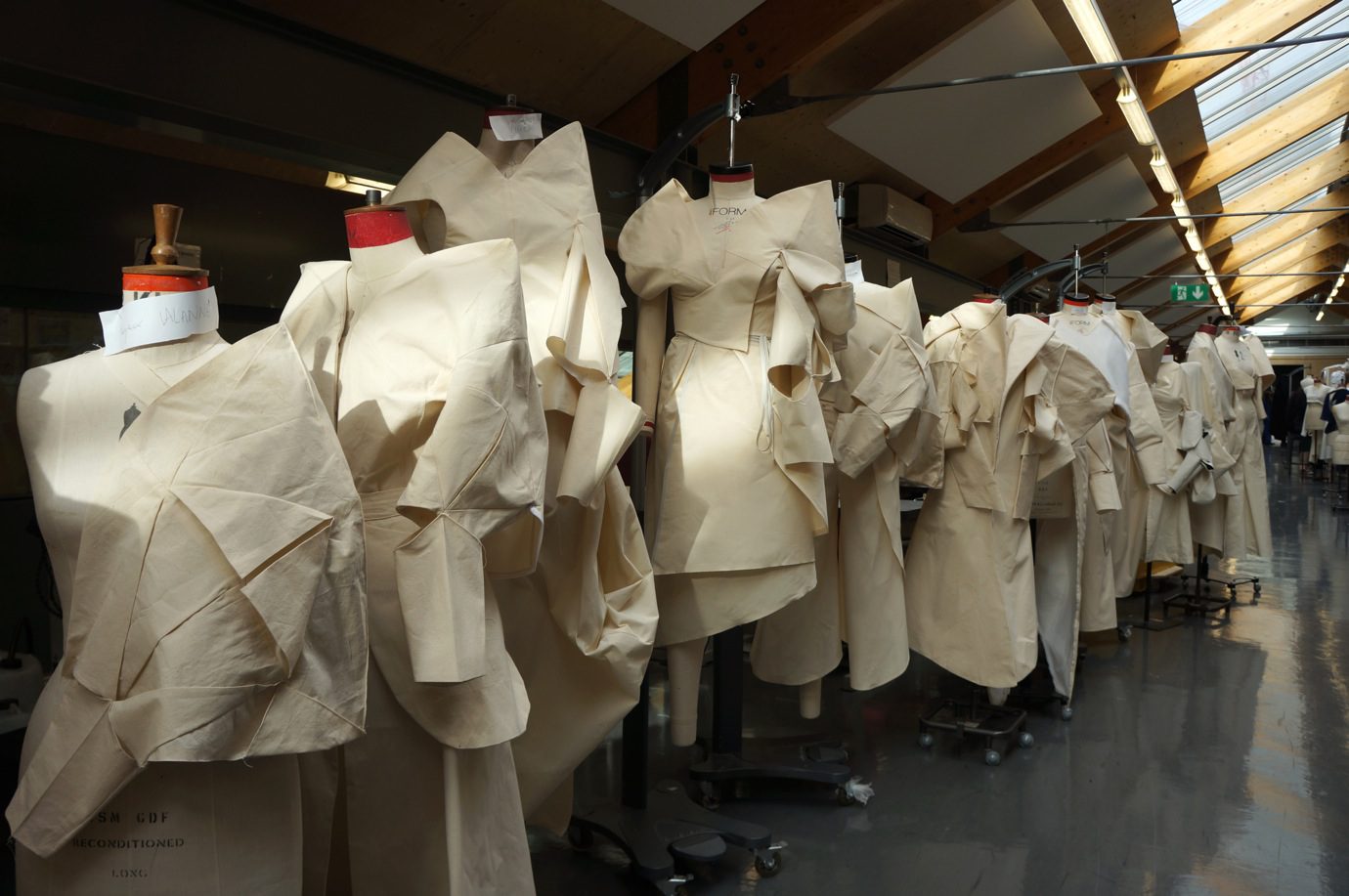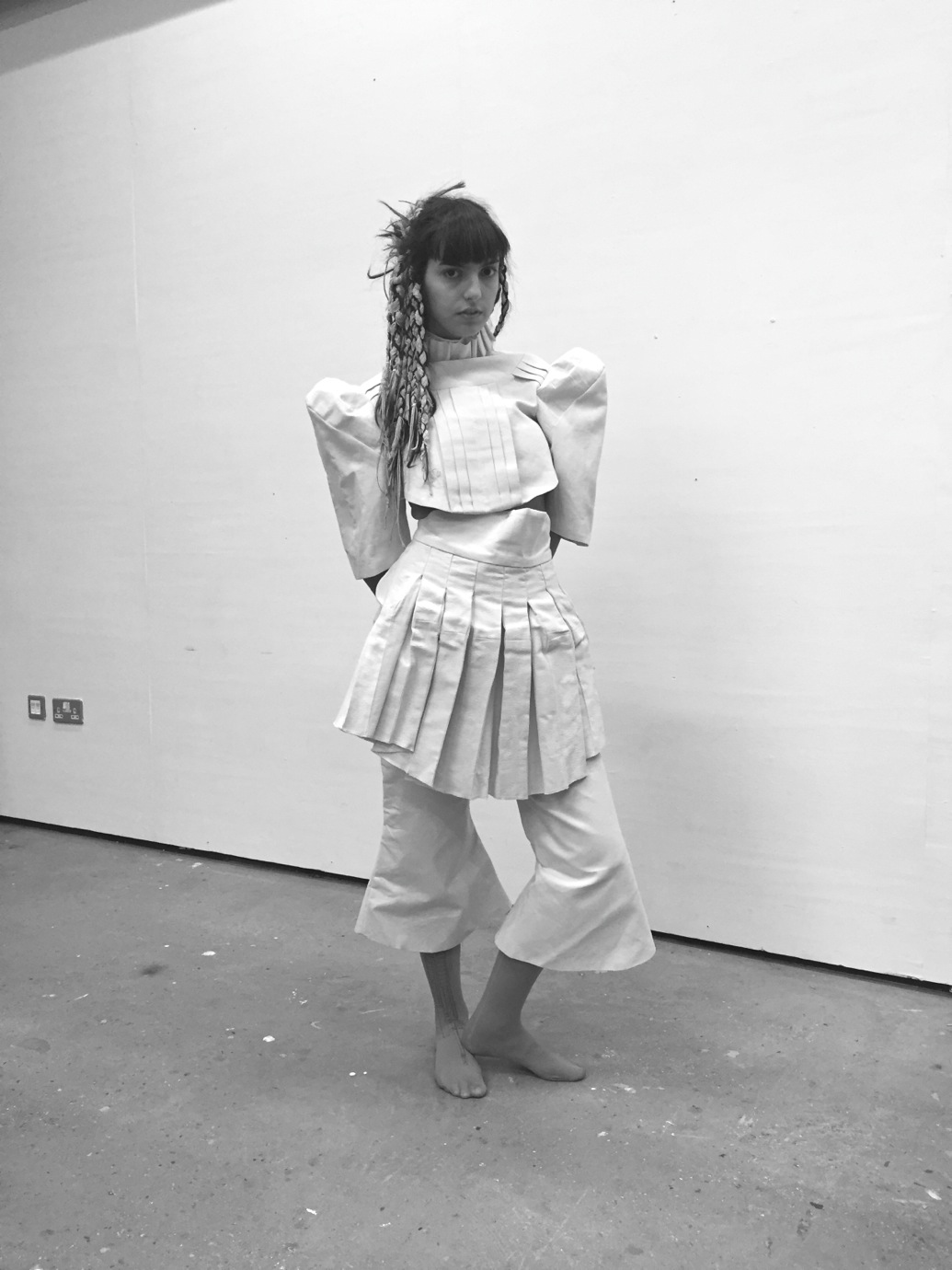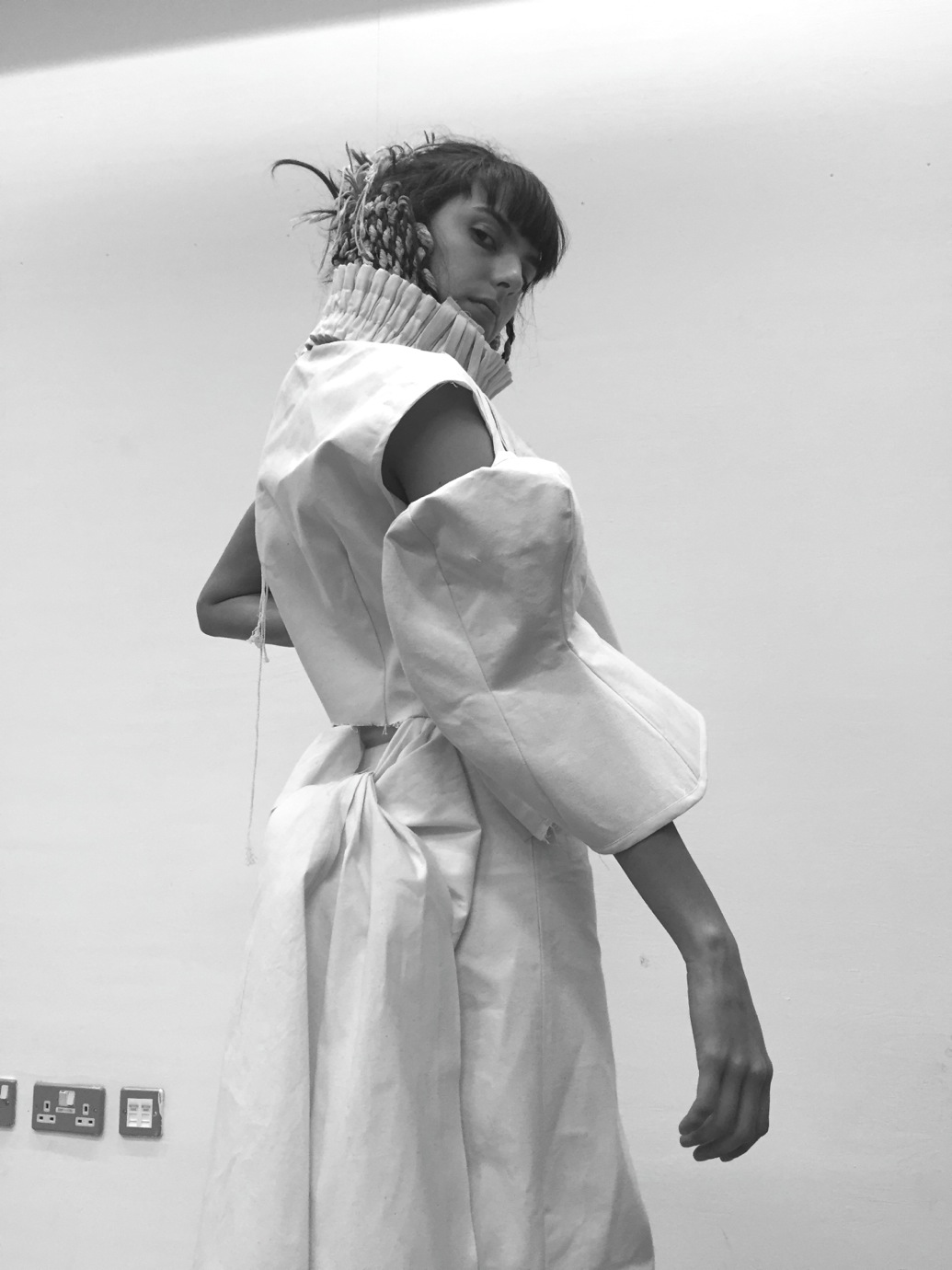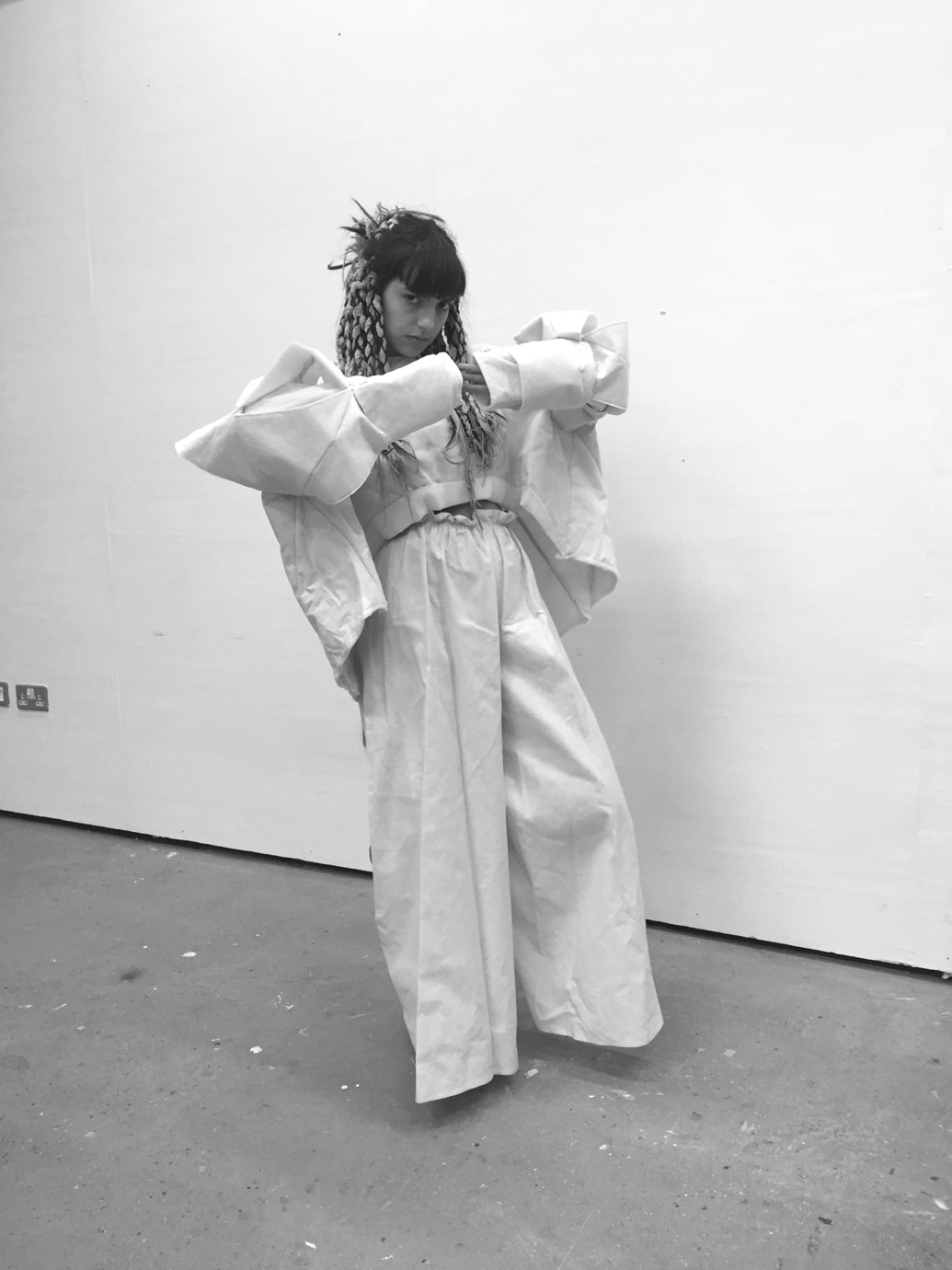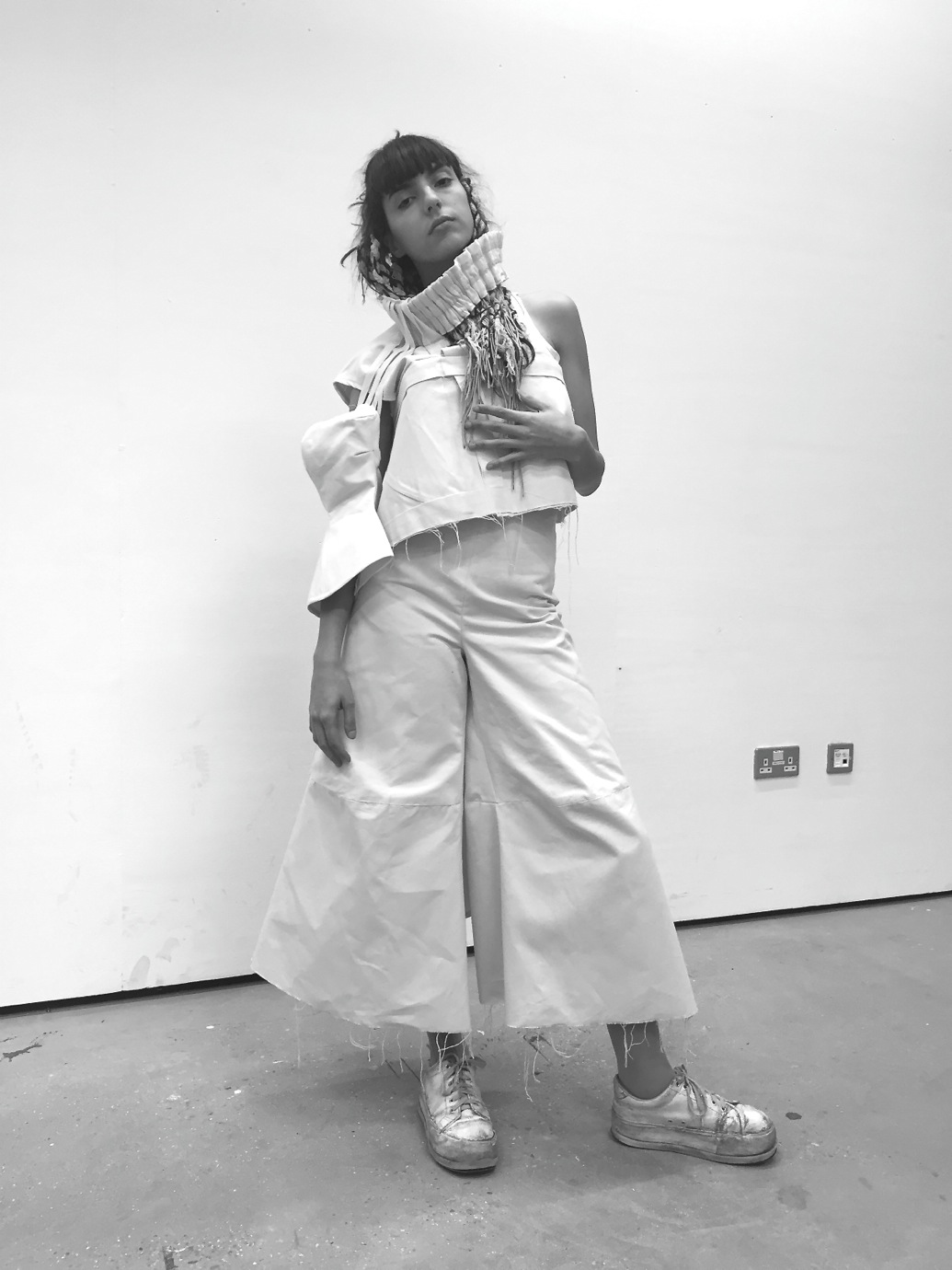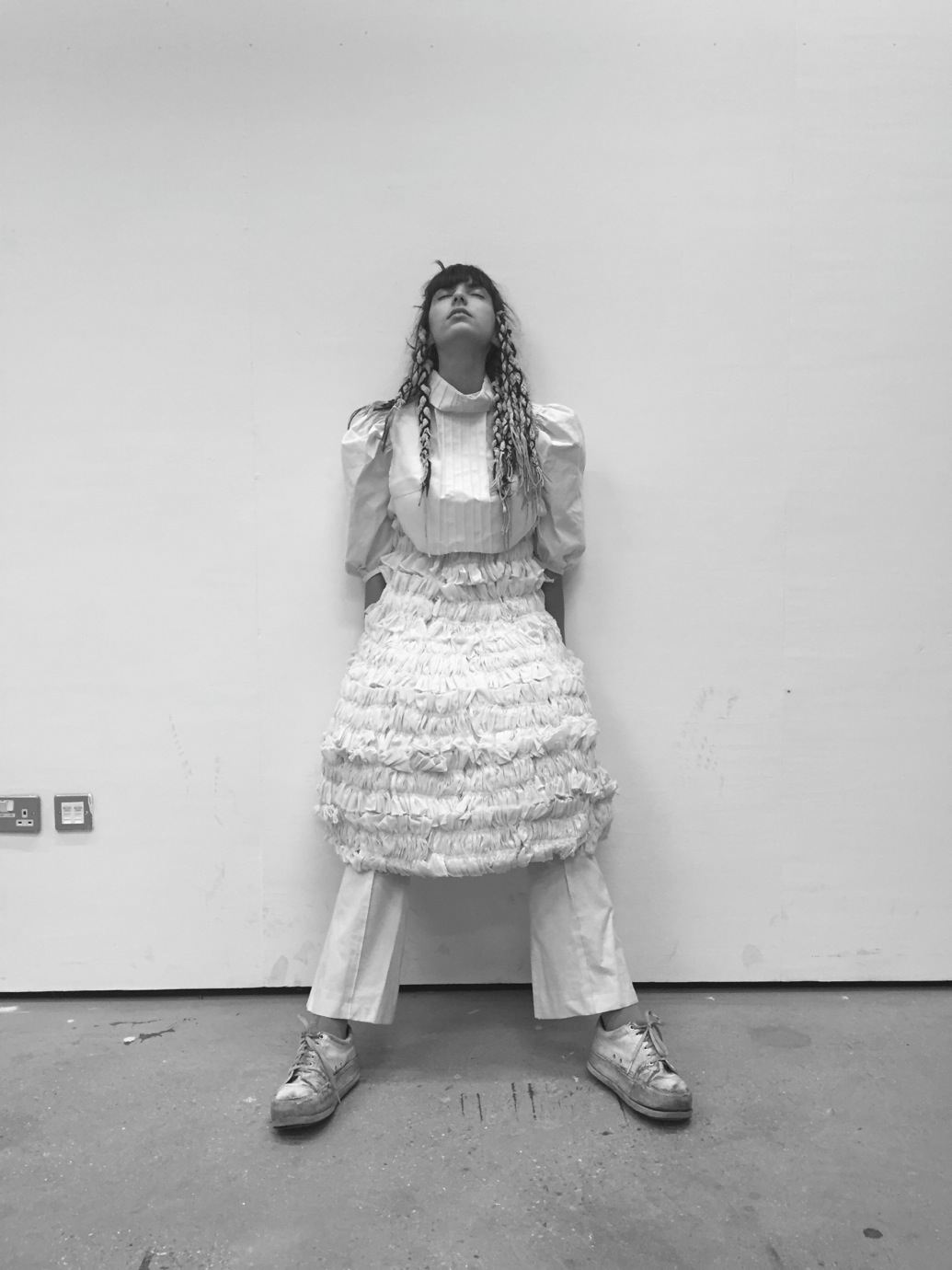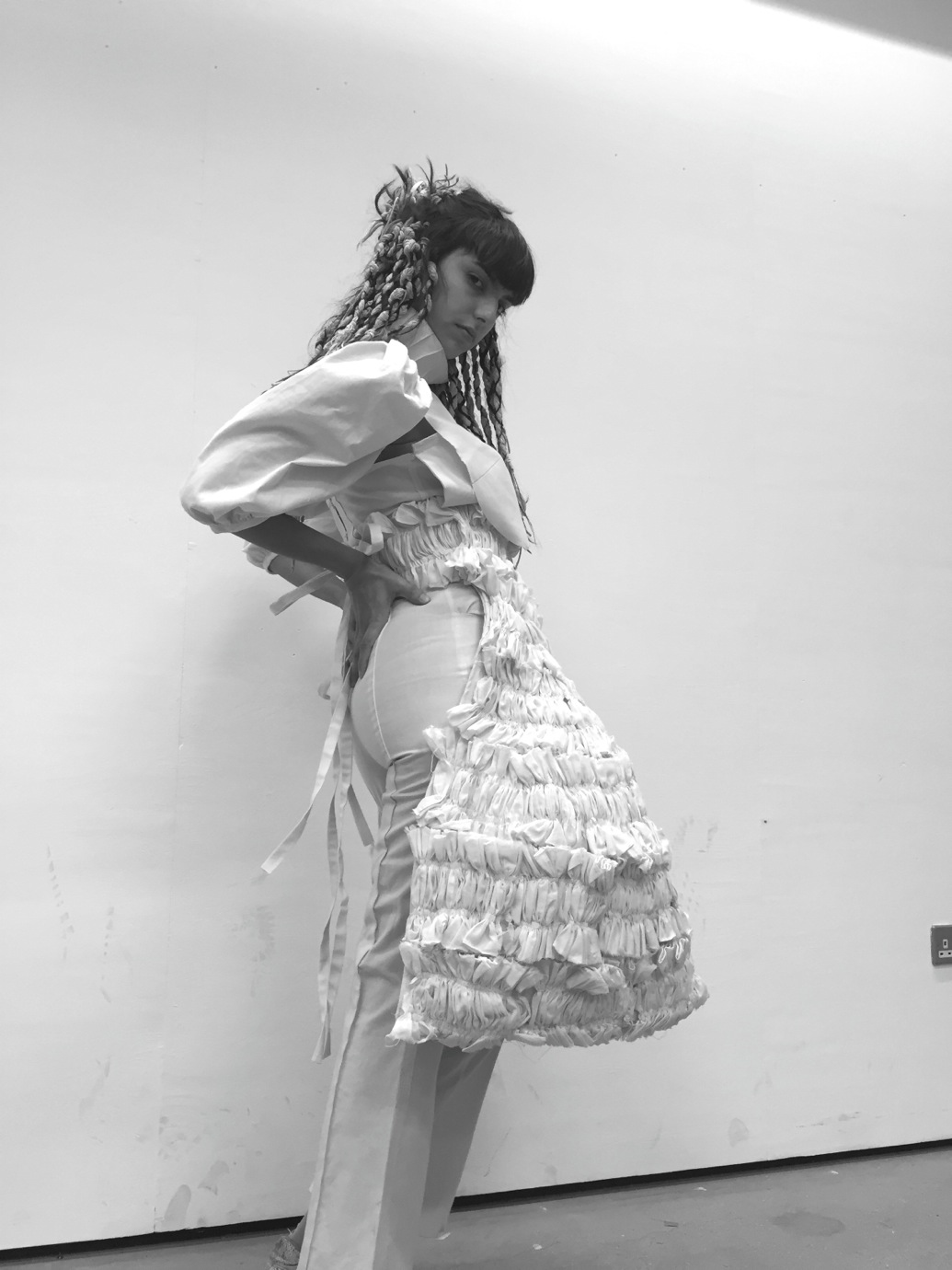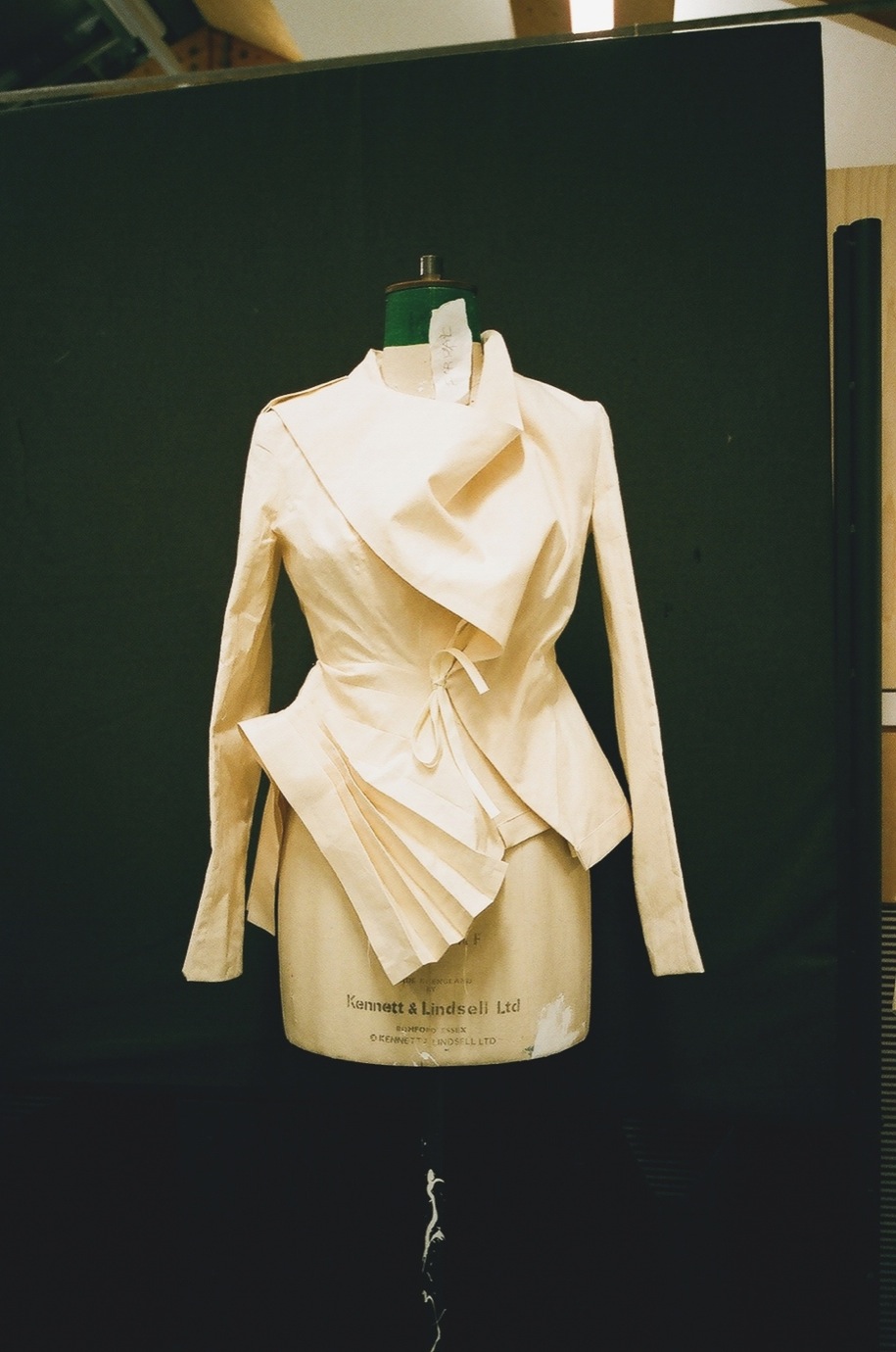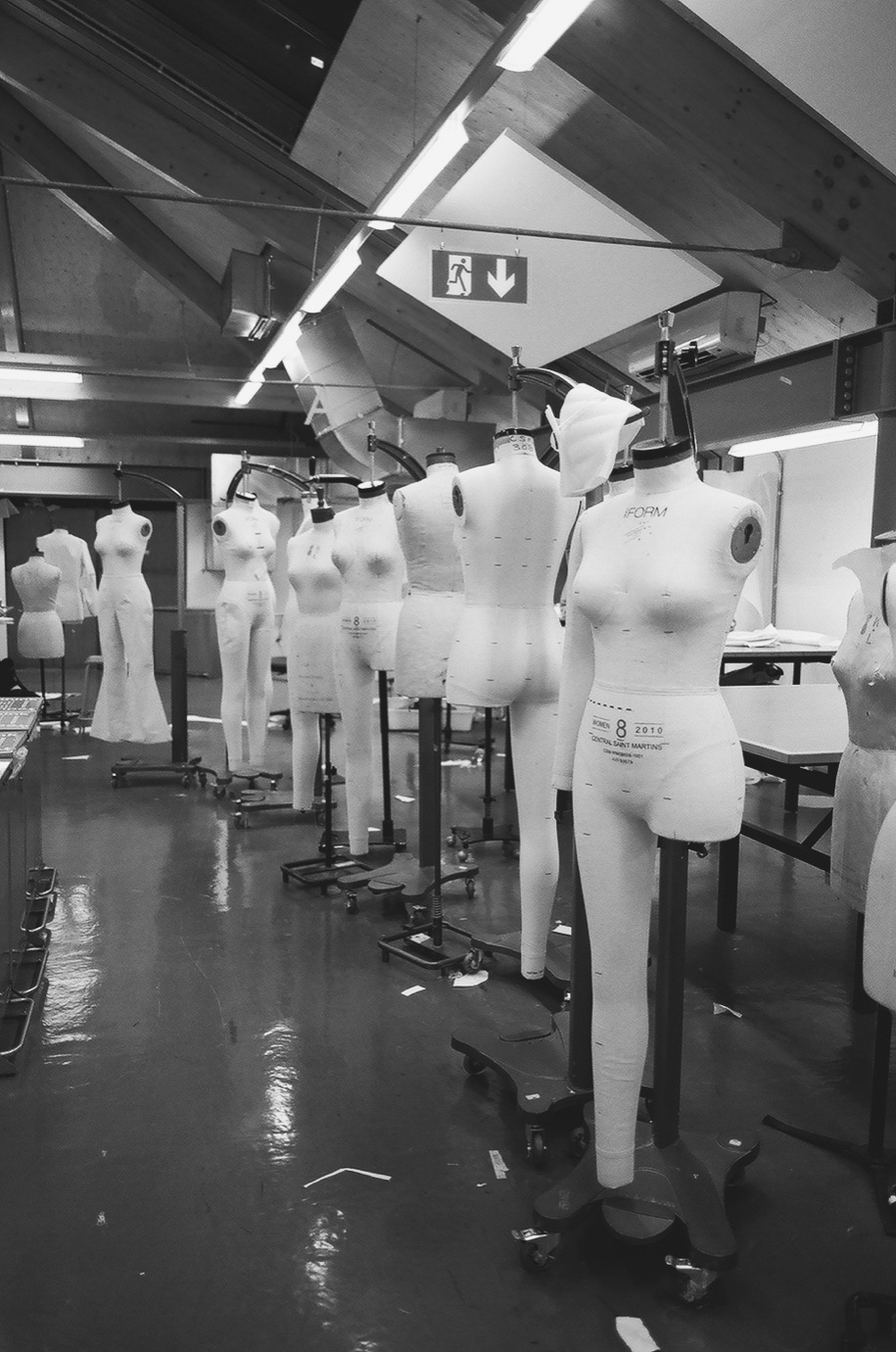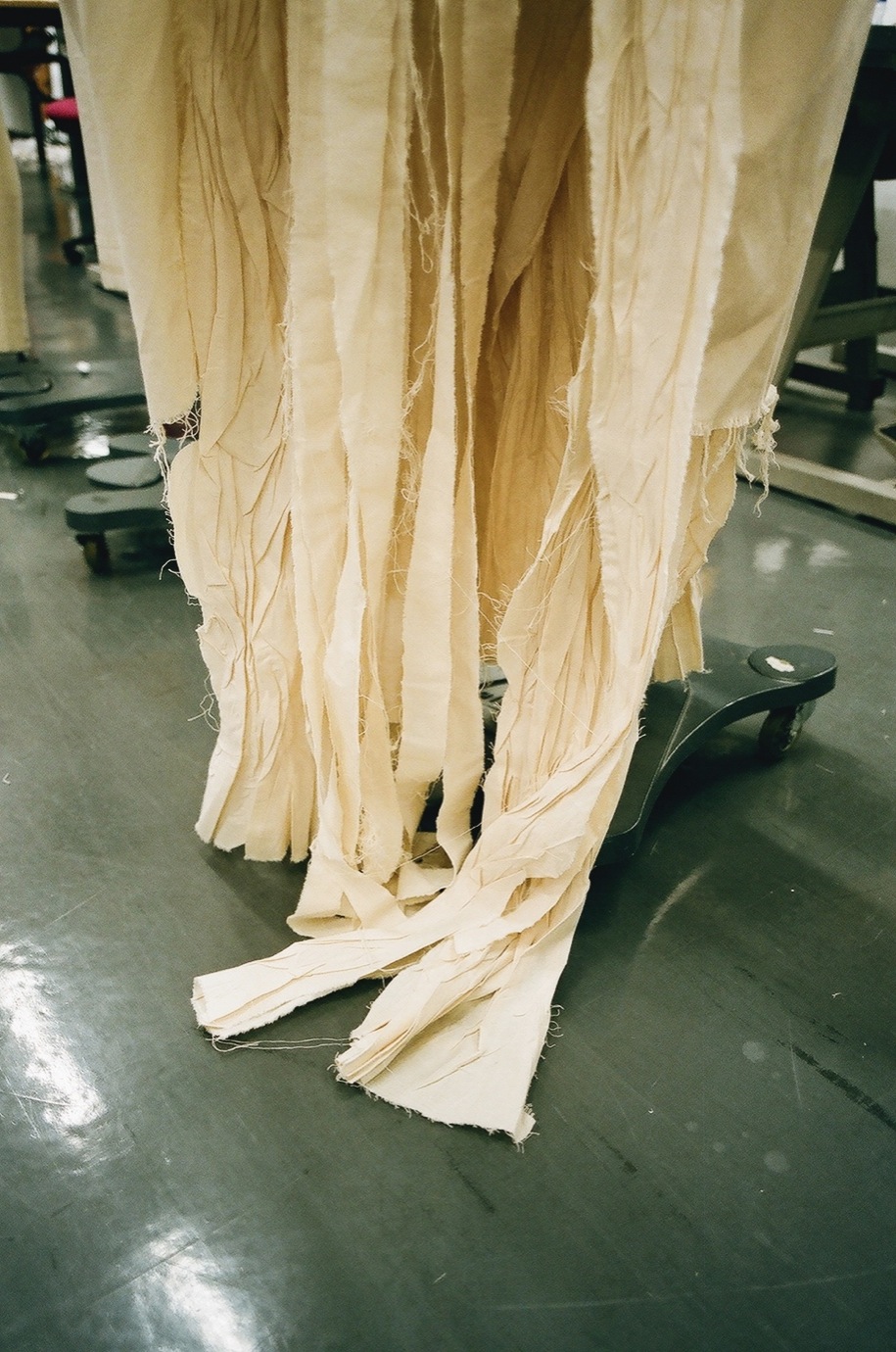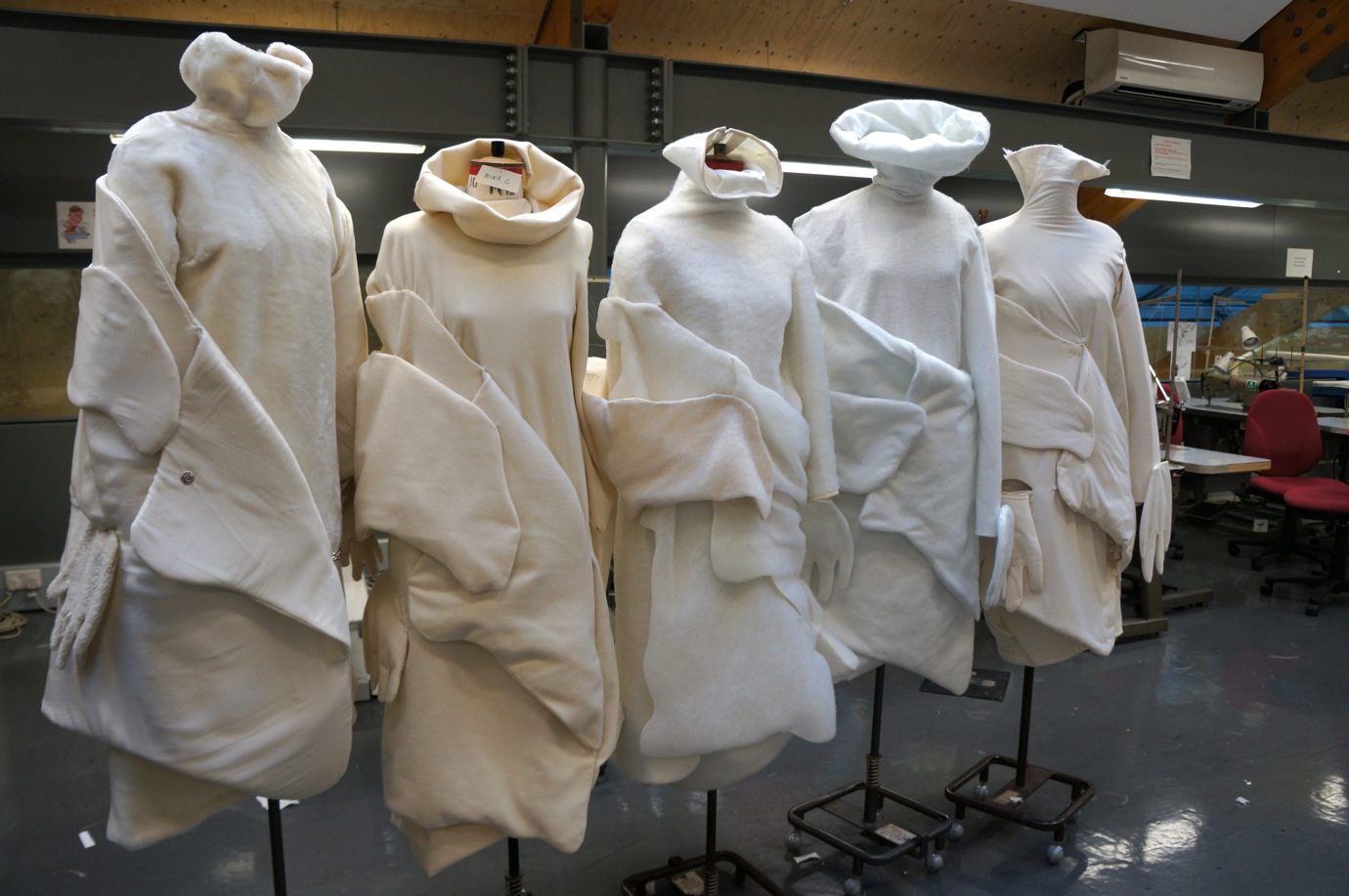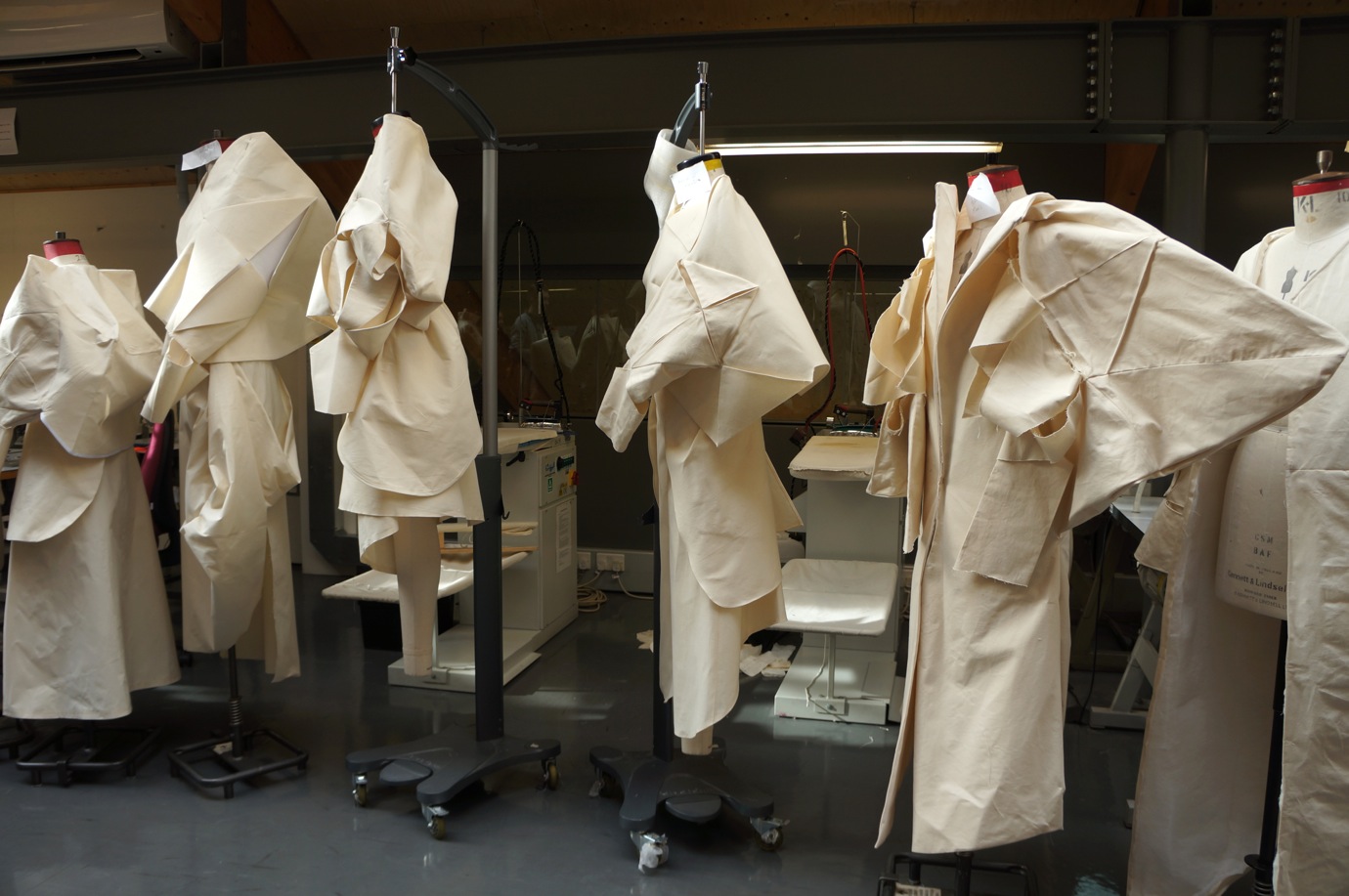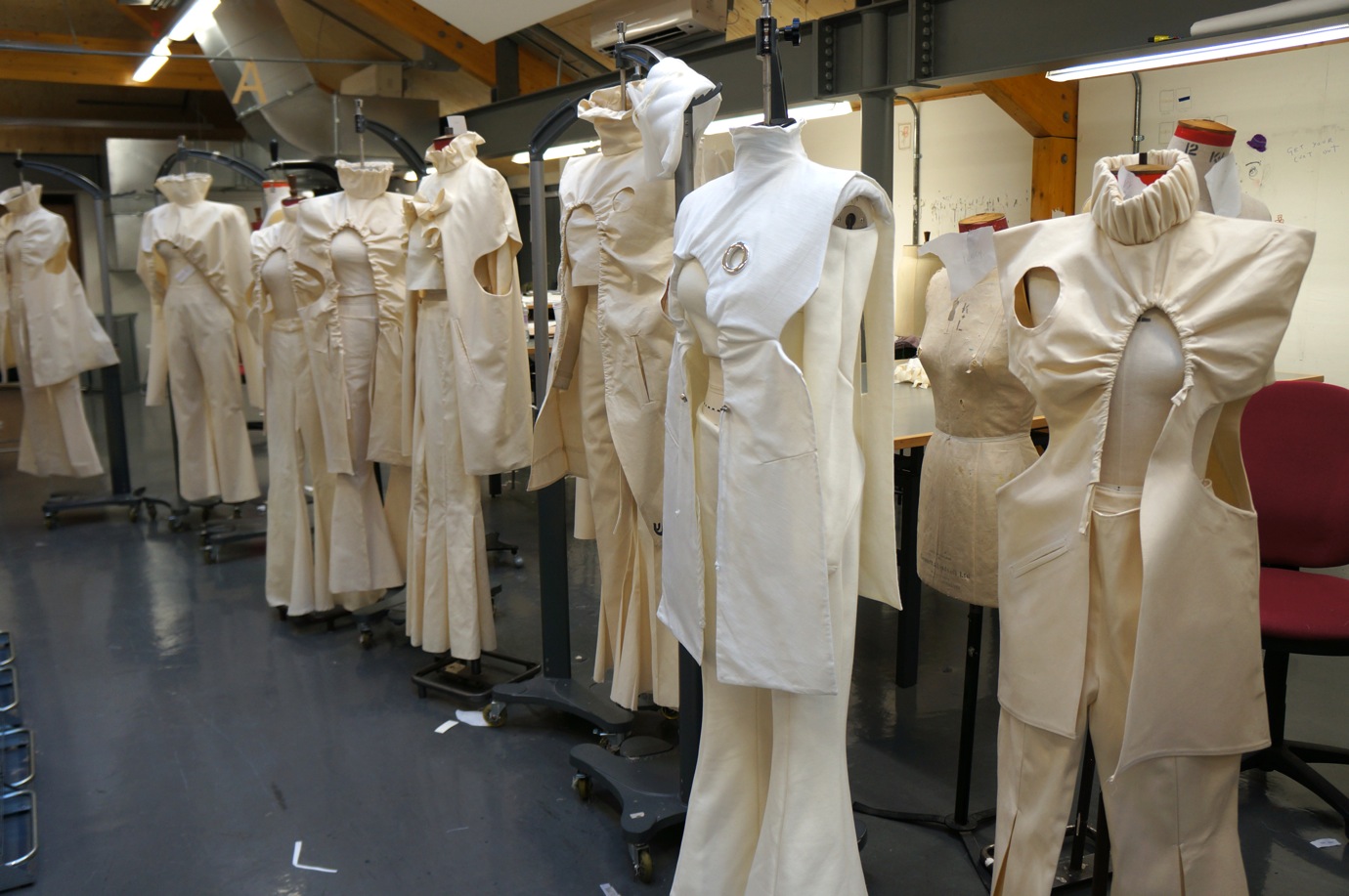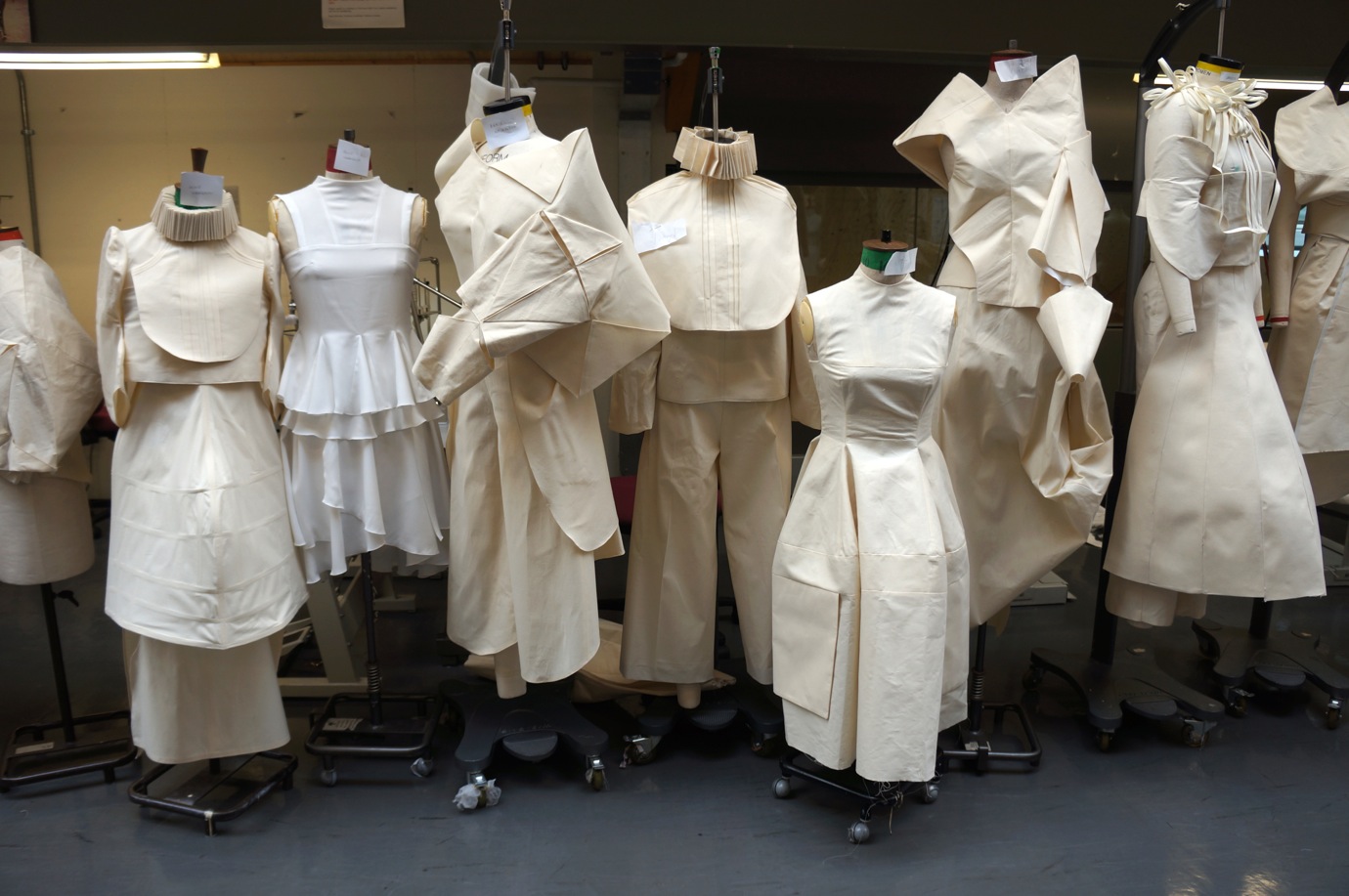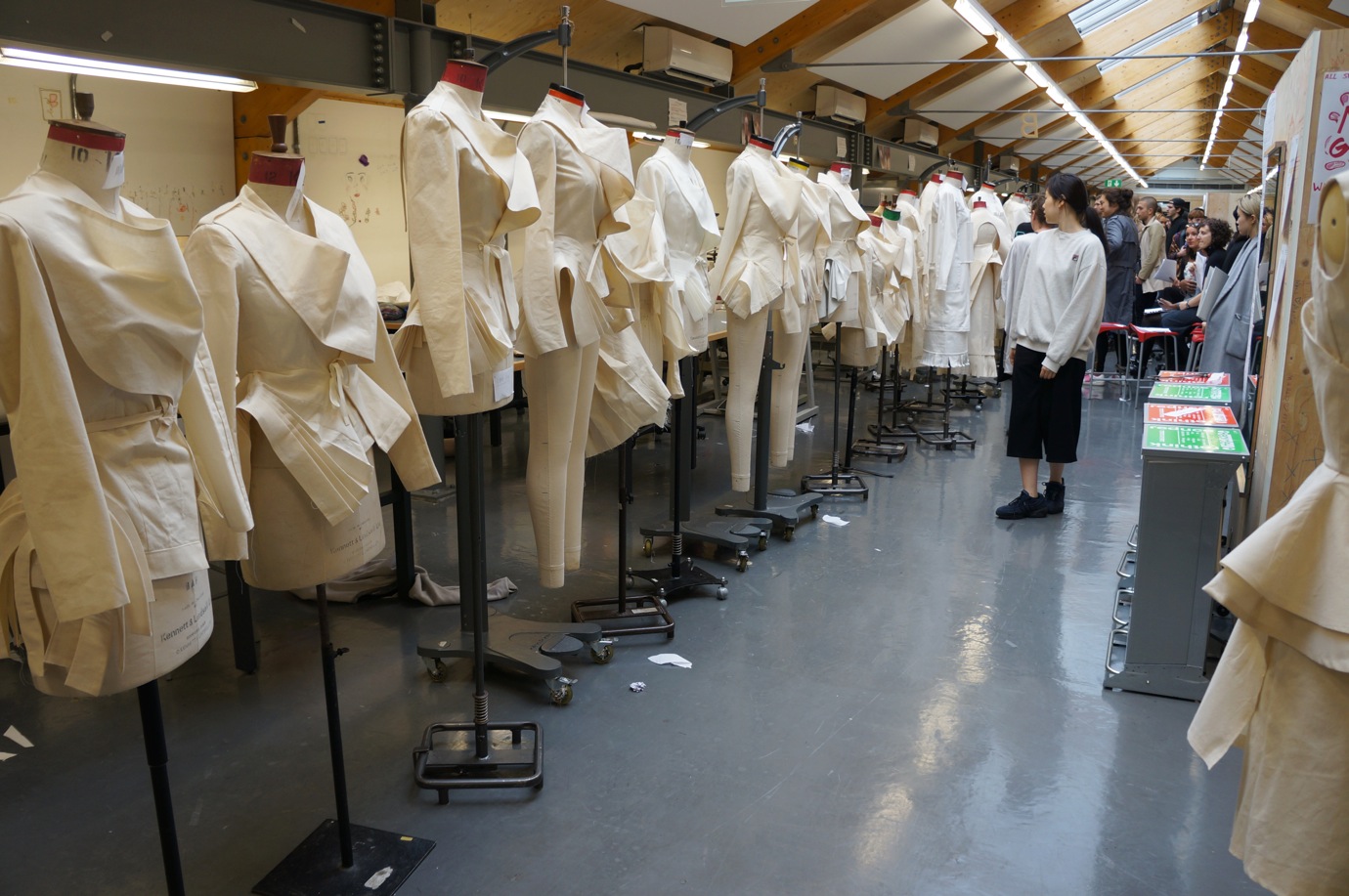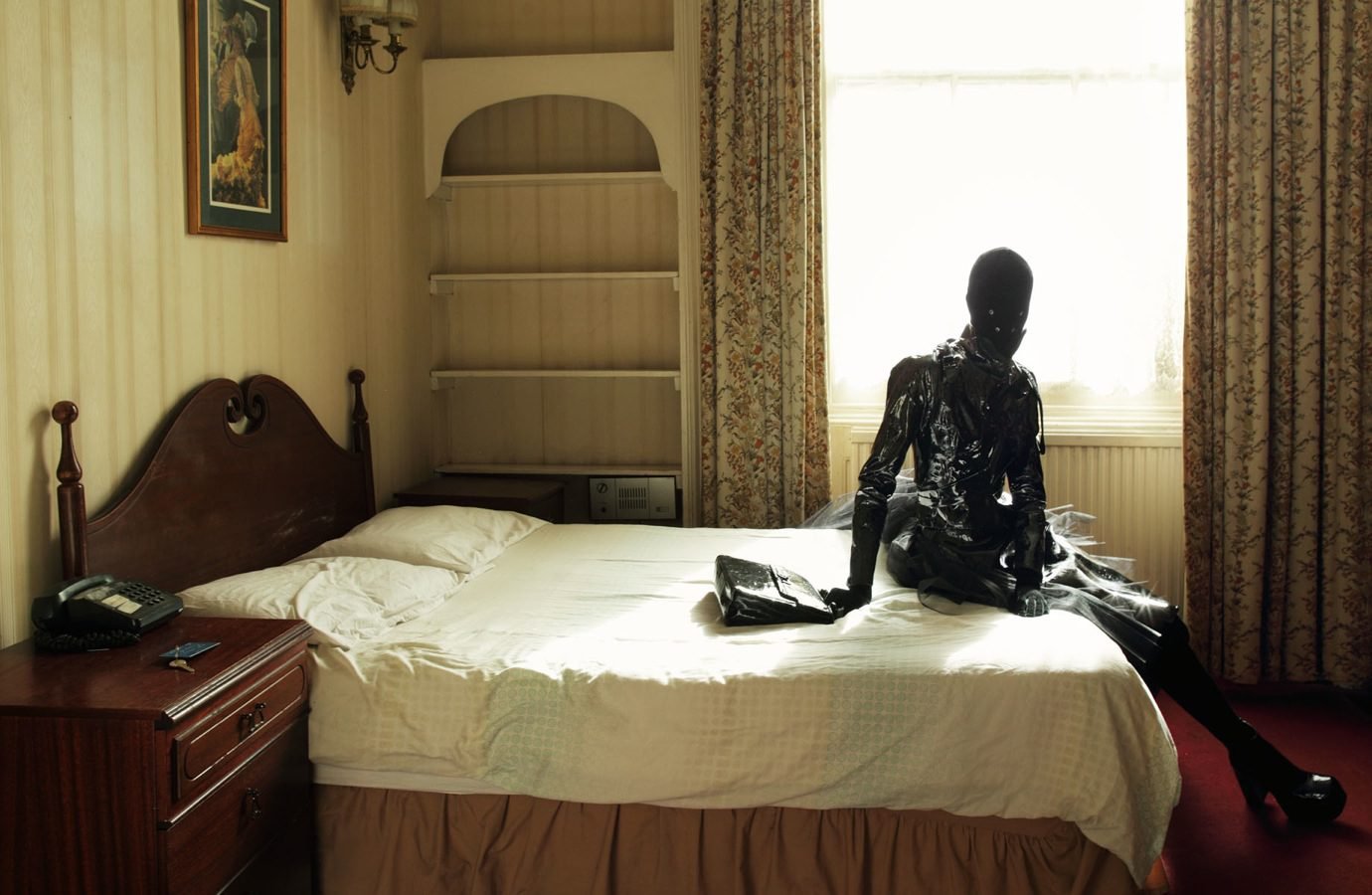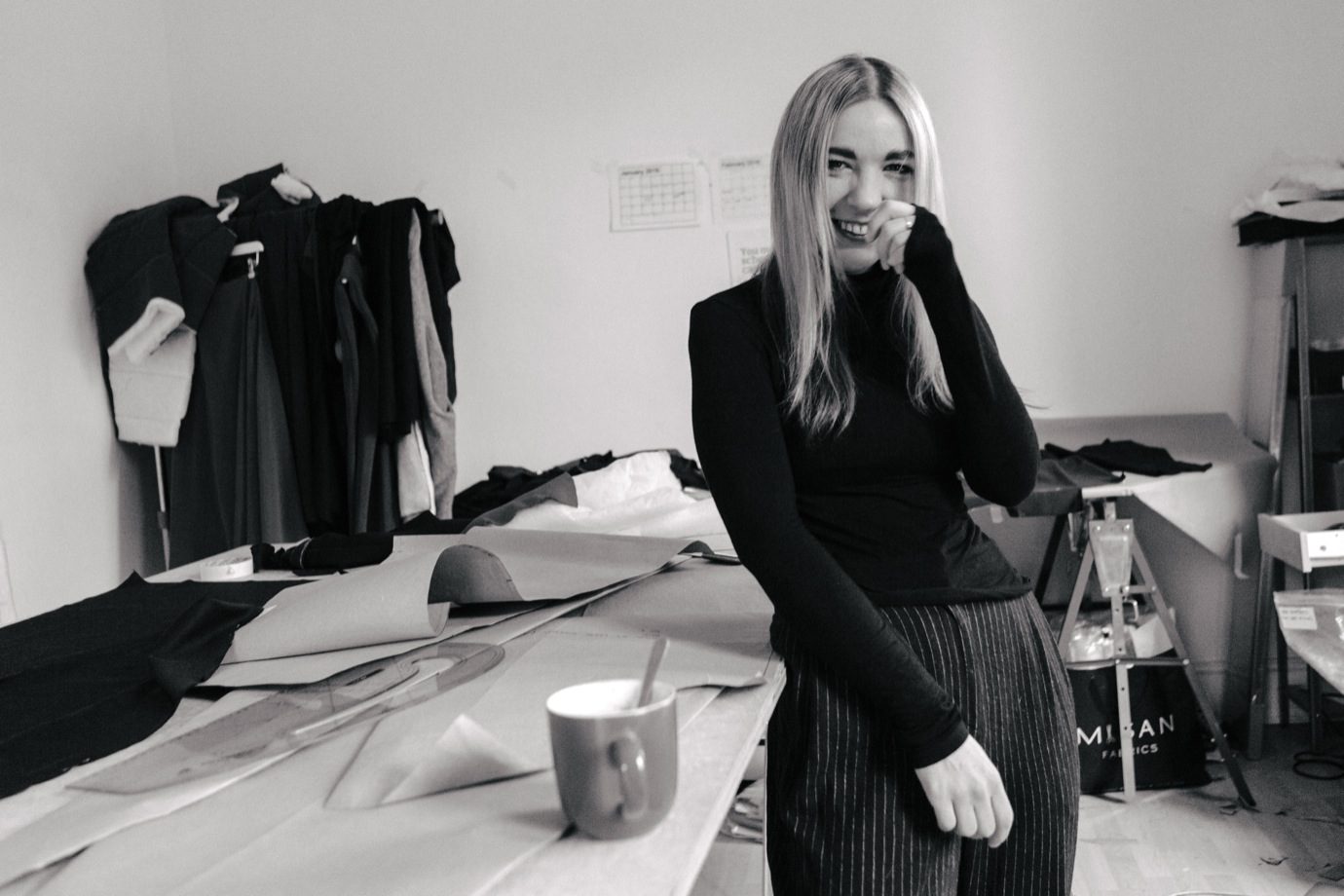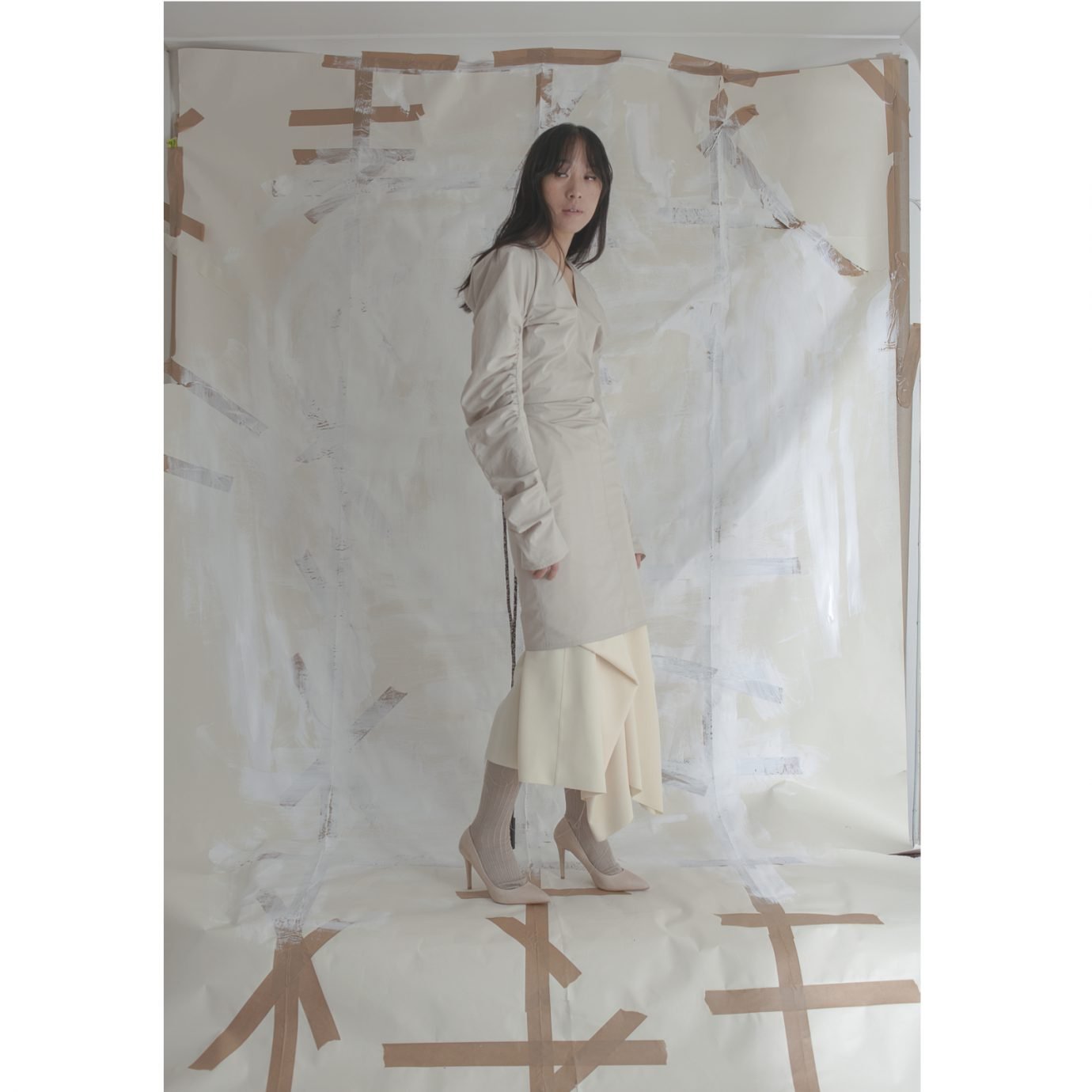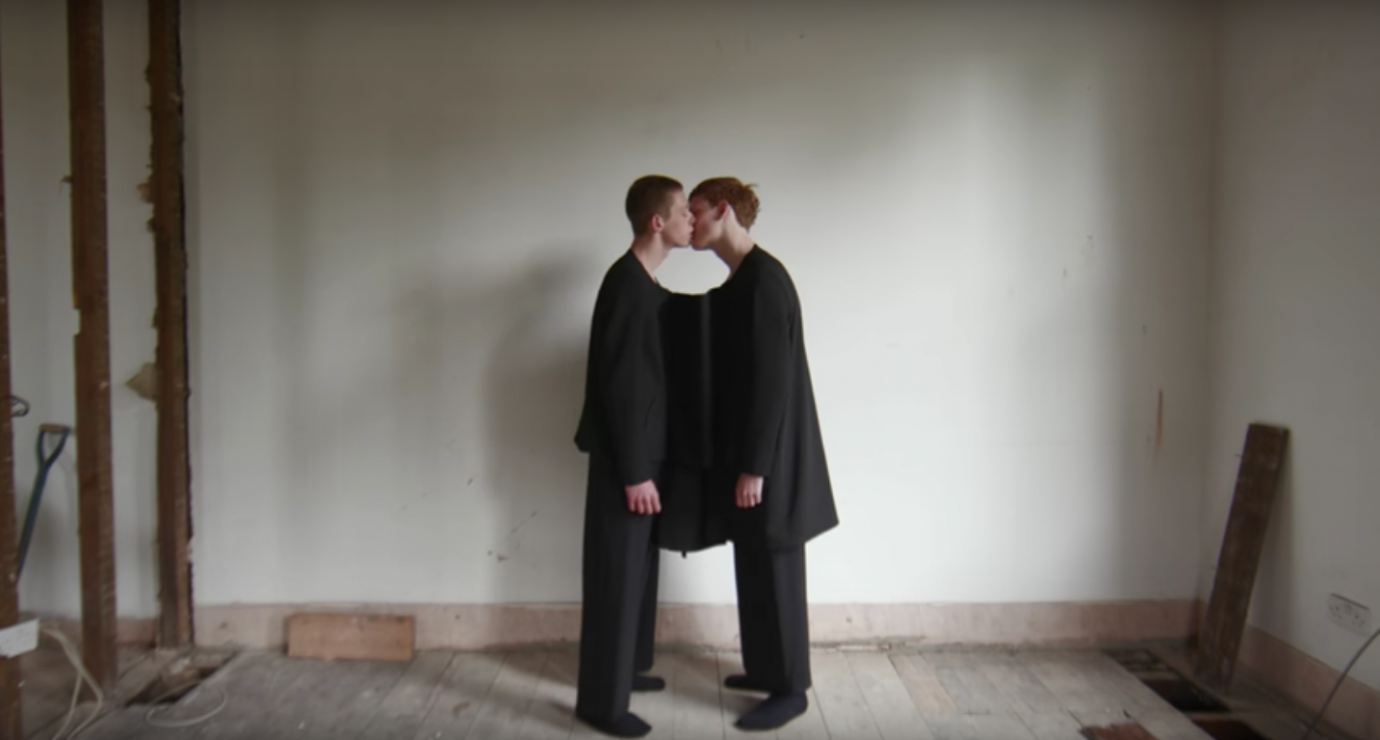The students were split up in three groups and were handed three sketches which varied widely in style, cut and shape. On the day of the crit, 120 fitted mannequins were cramped up in the Womenswear studios together with 40 pieces of dark-eyed, weary fashion students. As they presented their garments, the young enthusiasts displayed intricate constructions, tricky seams and successful solutions. They lifted up sleeves, moved around layers of stringy trousers and ruffled skirts, demonstratively waving and pointing in the air like a cry for help after the 48 hour insomnia they had just experienced. The skilled pattern cutters who had been following them during the project, was thoroughly inspecting their final achievements…
”So, this was the last thing you started up with. Am I right?”
Horace Page, Emma Louise Peer and Joël Quadri are three of the students who partook in this three week short cutting marathon.
What was the biggest challenge in this project?
Horace: Probably time frame. I mean, you work with other people’s designs, which you may not like. But that’s probably one of the best things about it as well. You basically need to be more driven and inventive in order to work within those restrictions. It definitely made me a lot faster, and it put some of our first year projects in a totally different light. Like, we had one month to make one garment in some cases. Sometimes when you have loads of time you just mess around, but end up doing the idea you had in first place anyway. It definitely teaches you to compromise your time and just do it.
Emma: The good thing about it was that we didn’t have any time to waste. There are other projects where we can research practically anything, and you end up walking around for several days not really knowing what to do, not getting anywhere. This was the complete opposite. We had to make, what was it? Like, seven garments in three weeks, which is more garments than I’ve made in my entire life. So, at the beginning it was very daunting. You just had to decide on what to do and just get on with it. The annoying thing, though, was that we weren’t able to create anything of a very good quality. The garments we made weren’t of enough standard to relate back to, since they were part of a learning process of cutting techniques we couldn’t entirely master. It wasn’t thorough enough. If we’ve had slightly more time, then maybe we could have perfected things, and be able to look back at what we did and learn more. It was an unbelievable amount of pressure, even for the people who felt comfortable in pattern cutting and making.

